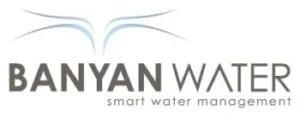*This story was originally published on the Banyan Blog in February 2018. We’ve added a bit more relevant information as the story continues to grow. Enjoy!*
Have you ever considered the fact that there is no new water on earth? In fact, we’re drinking the same water our ancestors did before us, and the dinosaurs before that! The only thing that has really changed is the amount of water our modern world requires, not only for increasing populations, but for manufacturing, industrial, and all sorts of non-potable needs. But do we really need to be using our limited supply of available freshwater for these non-potable uses?
Microsoft and Salesforce, two of the world’s leading technology companies, announced they will be
including onsite water treatment systems for decentralized water reuse and recycling in their newest
campuses. Although the projects are different in scope—one for a suburban campus and the other an
urban high rise—they both tackle an issue that demands our attention: the growing need for more
efficient water usage in the built environment.
Potable water—water clean enough to drink—constituted only about 5 percent of a commercial office
building’s water demands. The other 95 percent of water is allocated for applications like irrigation,
cooling tower water makeup, toilet flushing and laundry facilities. That 95 percent is defined as ‘non-
potable’ water, or non-drinking quality water. When you take a step back and realize we use Earth’s
most precious resource for non-potable applications, it seems misguided at best. Thus, onsite or
decentralized wastewater treatment projects—like those under construction by Microsoft and
Salesforce—are becoming more prevalent.
Decentralized water treatment in action
The Microsoft project in Silicon Valley is designed to achieve net zero non-potable water certification
under the Living Building Challenge. Microsoft’s goal? To utilize the non-potable water more than once.
For example, using the leftover water from cooling towers and faucets over and over again. This practice
leads to significantly less consumption of potable water from the local utility.
Salesforce also recently partnered with the City of San Francisco and Salesforce’s property developer,
Boston Properties, on their newest building, Salesforce Tower, to create one of the first commercial
black water reuse systems. The new system will become the largest onsite water recycling system in a
commercial high rise, utilizing 100 percent of used water from faucets, water fountains, urinals and
toilets for other non-drinkable purposes—after treatment and re-allocation for a separate pipe
network—such as toilet flushing and rooftop cooling tower makeup. Salesforce’s recycling system is
expected to reduce the building’s total potable water consumption by an astounding 76 percent.
Shifting away from the centralized status quo
The alternative is centralized water treatment, a process currently utilized across the U.S. With
centralized water treatment, both grey and black water—water discharged from sinks, showers and
water fountains or effluent from toilet flushing, respectively—are transported from homes and buildings
to a wastewater treatment facility, where they are filtered and treated to acceptable contaminate level
standards under the Clean Water Act, then discharged into a local waterway.
Centralized water treatment provides several challenges that a decentralized, or onsite, method
addresses. Onsite water reuse shifts the burden and cost of wastewater transportation and treatment
away from the public sector, therefore posing a solution to the urgent need to repair our country’s
water-related infrastructure and the lack of funding to complete infrastructure projects. Still, there are
several barriers to more prevalent onsite treatment systems, primarily in policy and public perception.
Currently, most building codes and regulations use centralized water distribution via wastewater
capture and treatment centers, making the introduction of smaller scale and decentralized water treatment challenging in practice, even if desired. That practice, however, is beginning to shift. The city
of San Francisco recently created legislation that requires any newly developed building larger than
250,000 square feet to build and operate an onsite greywater and rainwater capture and reuse system.
Waste not, want not
Another important consideration in implementing onsite water reuse is the public’s understanding and
perception, an issue referred to as the “yuck factor.” Reusing water from toilets does seem unsettling at
first, however with modern treatment standards in place and by utilizing separate piping systems to
ensure all treated water is used solely for non-potable applications… we have nothing to fear.
Singapore provides an extremely unique and interesting example of where water reuse is becoming necessary. For years the city state was reliant on bringing in a portion of its water supply from neighboring countries. In an effort to wean away from these sources, the government and PUB created the four national taps program, highlighting their four significant water sources: local catchment, imported water, desalination and NEWater. NEWater is the name given to their program of water recycling and reuse, some of which even returns to the nations drinking water supply. Long recognized as a hub of innovation and technological advancement, Singapore is engaged in both testing and implementing groundbreaking water treatment technologies and raising public awareness of water scarcity issues. NEWater aims to provide an increasing portion of the country’s water needs in the years ahead. We’re planning to do deep dive into the water challenges and innovations coming out of Singapore in the weeks to come, so check back soon!
It is time to end our thinking about the water system in a linear fashion. Rather, we must think of water
as a feedback loop, not dissimilar to the water cycle we each learned about in grade school. Perhaps it is
time we eliminate the term ‘wastewater’ altogether.
— –
Infographic courtesy of the William J. Worthen Foundation and Urban Fabrick. Click here to access their
onsite water reuse practice guide for design professionals.
